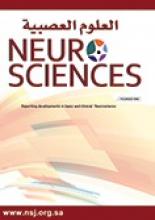Abstract
OBJECTIVE: To better understand the pathophysiological mechanisms underlying sciatica induced by lumbar intervertebral disk herniation and to ascertain the protein that presents with the most observable changes in the cerebrospinal fluid (CSF) of patients with sciatica.
METHODS: We conducted the study in the Key Laboratory of Shanghai 6th People’s Hospital, Shanghai Jiaotong University, Shanghai, Peoples Republic of China, during the period June 2004 to March 2005. In 2 separate experiments, we carried out the study involving the CSF of sciatica patients (the case group) and the CSF of otherwise, healthy volunteers (the control group). We utilized a proteomical analysis to compare the samples of 10 patients with sciatica with 10 volunteers in the control group. We individually separated each of the groups’ CSF by 2-dimensional gel electrophoresis. We analyzed the harvested gel images with PD Quest 2D-gel software (Bio-Rad) to ascertain the differential proteins between the 2 groups. We based the enzyme linked immuno- absorbent assay (ELISA) experiment, which followed, on the results of the first experiment.
RESULTS: We found 15 of the protein spots in the CSF differed appreciably in varying degrees between the 2 groups, and identification made by LC-MS/MS revealed that the most significant disparity was with cystatin C. The result of ELISA experiment confirmed a considerable decrease in the level of cystatin C (p<0.01) in the patients with sciatica.
CONCLUSION: In the CSF of patients with sciatica, the volume of cystatin C increased markedly indicating that it may play an important role in the pathophysiological processes of sciatica.
- Copyright: © Neurosciences
Neurosciences is an Open Access journal and articles published are distributed under the terms of the Creative Commons Attribution-NonCommercial License (CC BY-NC). Readers may copy, distribute, and display the work for non-commercial purposes with the proper citation of the original work.






